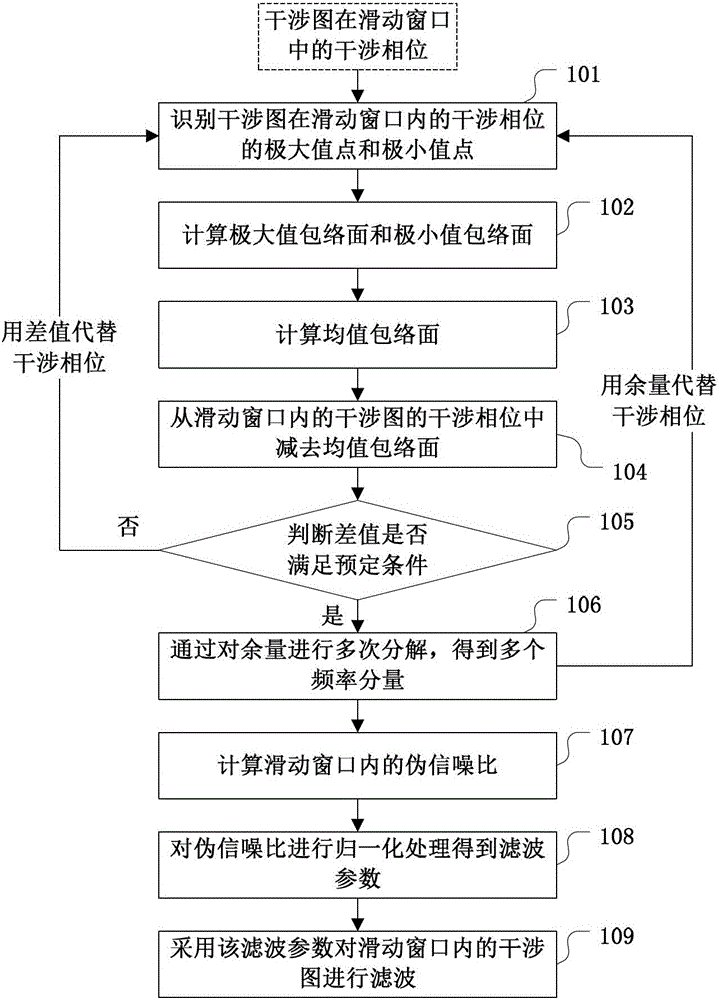A Method of Interferogram Filtering Based on Local Signal-to-Noise Ratio
A technology of interferogram and signal-to-noise ratio, which is applied in the field of image processing, can solve the problem of unknown noise level and achieve the effect of reducing loss
- Summary
- Abstract
- Description
- Claims
- Application Information
AI Technical Summary
Problems solved by technology
Method used
Image
Examples
Embodiment Construction
[0020] The technical solutions of the present invention will be described in further detail below with reference to the accompanying drawings and embodiments.
[0021] In view of this problem, the interferogram filtering method of the present invention uses Empirical Mode Decomposition (EMD) technology to decompose the interferometric phase to obtain the local signal-to-noise ratio of the interferogram. The noise level is determined by the local SNR, and then the noise level of the interferogram is adjusted. Targeted filtering.
[0022] For example, according to the method of the present invention, the two-dimensional EMD technology can be used to decompose the interference phase to obtain the components of the phase diagram at different frequency components, wherein the high-frequency component mainly contains the noise information of the original phase, and the low-frequency component contains the original phase. Scale trends. By obtaining the phase components of different ...
PUM
 Login to View More
Login to View More Abstract
Description
Claims
Application Information
 Login to View More
Login to View More - R&D
- Intellectual Property
- Life Sciences
- Materials
- Tech Scout
- Unparalleled Data Quality
- Higher Quality Content
- 60% Fewer Hallucinations
Browse by: Latest US Patents, China's latest patents, Technical Efficacy Thesaurus, Application Domain, Technology Topic, Popular Technical Reports.
© 2025 PatSnap. All rights reserved.Legal|Privacy policy|Modern Slavery Act Transparency Statement|Sitemap|About US| Contact US: help@patsnap.com



